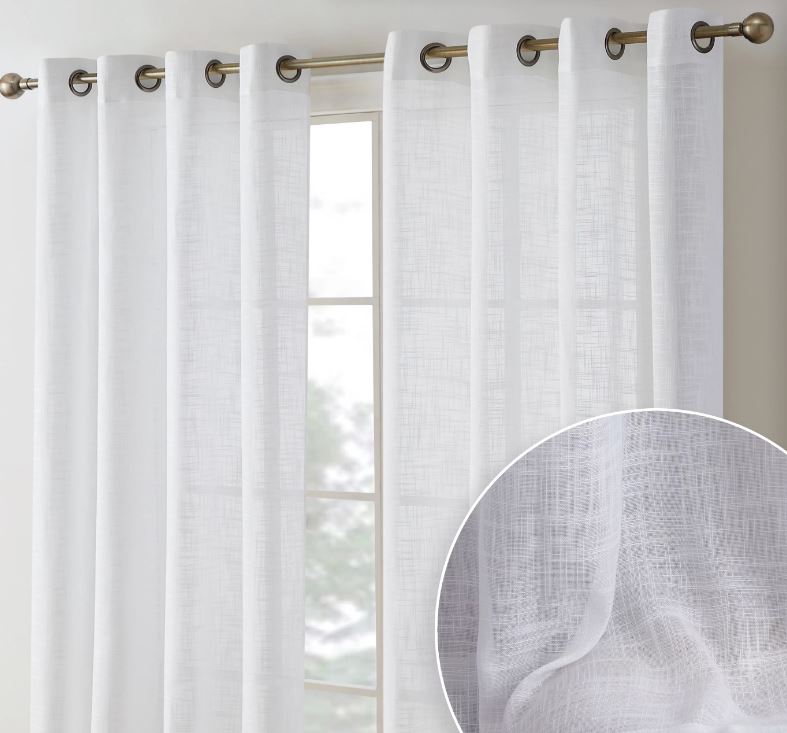In the realm of sustainable home design, choosing eco-friendly materials has become a cornerstone of conscious living. From furniture to flooring, every choice we make impacts the environment. Among these decisions, opting for sustainable window treatments, like linen Curtains Dubai can make a significant difference. Linen curtains are not only aesthetically pleasing but also offer numerous environmental benefits. Here’s why linen curtains stand out as the ultimate choice for sustainable home décor.
Linen is a Natural, Renewable Resource
Linen is derived from the fibers of the flax plant, one of the oldest cultivated crops in human history. Flax requires minimal water and pesticides compared to other crops, making it a more sustainable option than materials like cotton. Additionally, every part of the flax plant is utilized, reducing waste during production. When you choose linen curtains, you’re investing in a material that has a low environmental footprint from the very beginning of its life cycle.
Durable and Long-Lasting
One of the most sustainable choices you can make is opting for products that stand the test of time. Linen is renowned for its durability. Its fibers are naturally strong, ensuring that linen curtains retain their structure and aesthetic appeal even after years of use. Unlike synthetic materials that wear out quickly and end up in landfills, linen curtains offer longevity, reducing the need for frequent replacements.
Biodegradability and Low Environmental Impact
At the end of its life cycle, linen naturally decomposes without releasing harmful toxins into the environment. This biodegradability makes it a much greener alternative to synthetic materials, which can take decades to break down. By choosing linen curtains, you’re contributing to a circular economy where materials return to the earth harmlessly.
Energy Efficiency and Thermal Regulation
Linen curtains are not just sustainable; they’re also practical. Linen’s natural fibers allow for excellent thermal regulation, keeping your home cooler in summer and warmer in winter. This can reduce your reliance on air conditioning and heating systems, lowering your energy consumption and carbon footprint. The breathable nature of linen also ensures proper ventilation, enhancing indoor air quality.
Minimal Water and Chemical Usage in Production
The production of linen involves fewer chemicals and significantly less water compared to cotton and synthetic fabrics. Flax plants thrive in moderate climates with natural rainfall, reducing the need for irrigation. Additionally, linen production processes have become increasingly eco-friendly, with many manufacturers adopting sustainable practices to minimize their impact on the environment.
Timeless Aesthetic Appeal
Sustainability in home décor isn’t just about materials; it’s also about creating a timeless look that doesn’t require constant updating to stay on-trend. Linen’s natural texture and elegant drape make it a classic choice for any interior style, from modern minimalism to rustic farmhouse. Its neutral tones complement various color palettes, ensuring your curtains stay stylish for years to come.
Hypoallergenic and Non-Toxic
Linen is naturally hypoallergenic and resistant to bacteria and fungi, making it an excellent choice for homes with allergy-prone individuals. Unlike synthetic materials that can release volatile organic compounds (VOCs), linen is free from harmful chemicals. This ensures a healthier indoor environment for you and your family.
Versatility in Design
Linen curtains come in a variety of styles, from sheer and airy to thick and textured. Whether you’re looking for blackout curtains for your bedroom or lightweight drapes for your living room, linen offers options for every need. Its versatility ensures that you don’t have to compromise on style while making sustainable choices.
Easy Maintenance
Sustainable choices should also be practical, and linen curtains tick that box. Linen is naturally resistant to dirt and stains, requiring minimal maintenance. Most linen curtains can be machine-washed or spot-cleaned, reducing the need for harsh chemical cleaners that can harm the environment.
Supporting Ethical Practices
Many linen manufacturers prioritize ethical production practices, ensuring fair wages and safe working conditions for their workers. By choosing linen curtains from reputable brands, you’re supporting companies that value sustainability and social responsibility.
How to Incorporate Linen Curtains into Your Home
For a Minimalist Look: Choose neutral tones like white, beige, or soft gray. Pair them with simple curtain rods to enhance their understated elegance.
Layering for Depth: Combine sheer linen curtains with heavier drapes for a layered look that adds texture and functionality.
Customizable Lengths: Opt for floor-to-ceiling linen curtains to create an illusion of height and spaciousness in smaller rooms.
Accessorize Thoughtfully: Use natural materials like bamboo or wooden tiebacks to complement the eco-friendly vibe of linen curtains.
Conclusion
Linen curtains Dubai are more than just a window treatment; they’re a statement of sustainability and timeless style. By incorporating linen into your home décor, you’re choosing a material that aligns with eco-friendly values while offering unmatched beauty and functionality. As we strive to make more sustainable choices in our daily lives, linen curtains stand out as a simple yet impactful way to contribute to a greener planet



